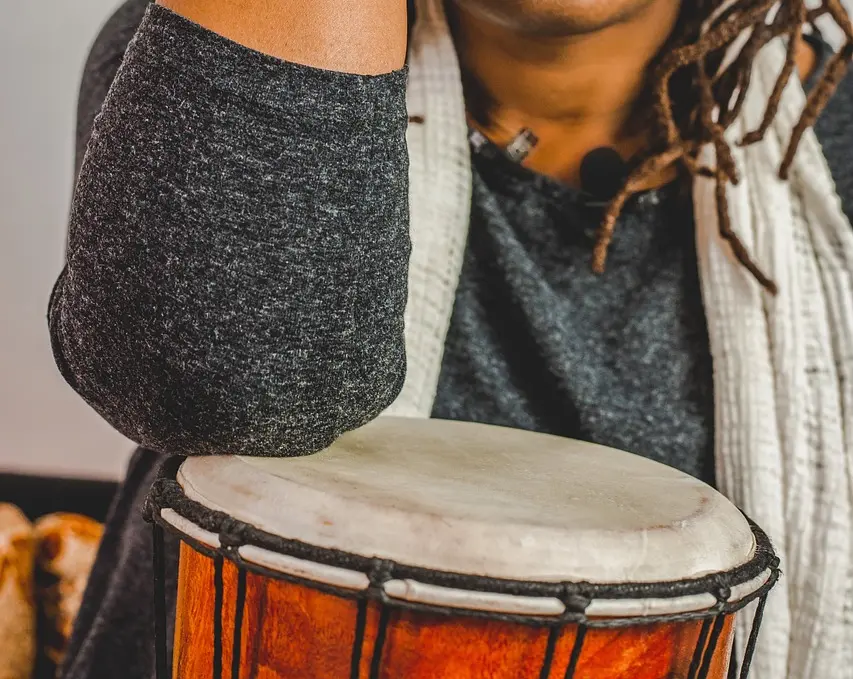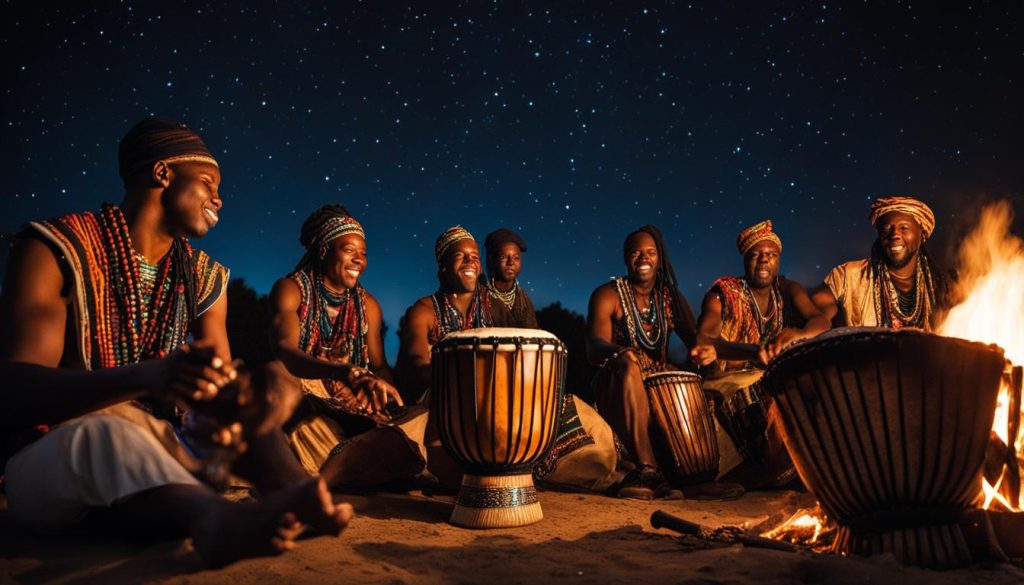The djembe is a popular musical instrument that falls under the classification of a percussion instrument. So, what is the djembe used for?
The djembe is widely used in traditional African music, where it plays a crucial role in various ceremonies, such as festivals, weddings, and funerals.
With its ability to produce a wide range of sounds, from deep bass to resonant slaps, the djembe adds a captivating rhythm to these cultural events.

In recent years, the djembe has also found its way into contemporary music genres, showcasing its adaptability and versatility.
Renowned artists such as Paul Simon, Cirque du Soleil, and Tool have incorporated the djembe into their compositions, adding an electrifying African flair to their music.
Furthermore, the djembe has become a favorite percussion instrument in recreational settings, such as drum circles, where people come together to create rhythmic music and bond through the power of sound.
Its unique design and rich cultural heritage make the djembe a cherished instrument, transcending boundaries and captivating audiences worldwide.
Content
Origins and Characteristics of the Djembe
The djembe drum has a rich history rooted in the vibrant culture of West Africa. It originated in Mali around the 12th century and was invented by the Mandinke tribe, known for their extraordinary musical traditions.
The word “djembe” itself comes from the Malinke language, spoken by the Mandinke people.
The construction of the djembe is a testament to the craftsmanship and ingenuity of the Mandinke tribe. It is meticulously carved from a single piece of traditional hardwood, typically sourced from the Lenge tree.
This process ensures the durability and resonance of the instrument, allowing it to produce a wide range of tones and pitch.
The unique shape of the djembe, with its wider base and narrower top, gives it a goblet-like appearance.
This design contributes to its exceptional sound projection and resonance, enabling the drum to be heard clearly over long distances.
The drumhead of the djembe is made from goat skin, carefully selected for its thin yet resilient nature. This natural drumhead material is essential in producing the distinct timbre of the instrument, from deep bass tones to sharp slap sounds.
The goat skin’s responsiveness to the touch of a skilled drummer allows for intricate and expressive playing.
With its origins deeply rooted in the Mandinke tribe and West African culture, the djembe’s design and materials harmoniously come together to create a versatile and captivating musical instrument.
Djembe Origins and Characteristics
| Origin | Wood | Drumhead |
|---|---|---|
| Mali, West Africa | Lenge tree | Goat skin |
Cultural Significance of the Djembe
The djembe holds a profound cultural significance in West Africa, particularly in Mali, Guinea, and Senegal.
It is deeply intertwined with the region’s rich traditions of storytelling, traditional music and dance, and spiritual and ritualistic life.
One of the key connections between the djembe and West African culture is through griots.
Griots are highly respected musicians and oral historians who play a crucial role in preserving and passing on cultural heritage through their music and storytelling.
They are considered the keepers of the community’s history, genealogy, and moral values.
The djembe serves as a powerful medium for storytelling, allowing griots to share important cultural and historical information with future generations.
Through their rhythmic melodies and intricate beats, the drum becomes an instrument of communication, relaying narratives of the past and fostering a sense of cultural identity.
In addition to storytelling, the djembe plays an integral role in traditional music and dance ceremonies. It is a centerpiece of festive celebrations, weddings, funerals, and other social gatherings.
The rhythmic patterns produced by the djembe evoke a vibrant energy that drives the dancers and creates a harmonious connection between the music, the dancers, and the spiritual realm.
Moreover, the djembe is believed to embody spiritual and ritualistic significance. It is thought to encapsulate the spirits of the tree from which it was made, the animal whose skin forms its drumhead, and the individuals involved in its creation.
This belief infuses the djembe with a sense of sacredness, elevating its status beyond a mere musical instrument and turning it into a conduit for spiritual expression.
Djembe’s Cultural Significance
| Aspects | Description |
|---|---|
| Storytelling | The djembe is used by griots to pass on cultural and historical information through music and storytelling. |
| Traditional Music and Dance | The djembe is an essential component of traditional music and dance ceremonies, including festivals, weddings, and funerals. |
| Spiritual and Ritualistic Life | The djembe is believed to contain spiritual energies and is revered for its connection to the spiritual realm. |

Through its deep-rooted cultural significance, the djembe not only serves as a musical instrument but also represents the spirit, history, and traditions of the West African communities that have cherished it for centuries.
Modern Uses of the Djembe
The djembe has gained global popularity and is now used in a wide range of musical genres. Artists such as Paul Simon, Cirque du Soleil, and Tool have incorporated the djembe into their contemporary music compositions, showcasing its unique sound and versatility.
Whether in live performances or studio recordings, the djembe is a sought-after instrument that adds depth and rhythm to the music.
Besides its presence in mainstream contemporary music, the djembe has also become a popular choice for drum circles and recreational music-making.
Its rhythmic patterns and distinct tones captivate audiences and make it a favorite among enthusiasts embracing the joy and connection of group percussion.
Considered as the heartbeat of the music, the djembe brings a vibrant energy to any musical setting, transcending cultural boundaries.
Its ability to blend seamlessly with various instruments and musical styles highlights its versatility and adaptability to different artistic expressions, from world music fusions to experimental compositions.
The global popularity of the djembe is a testament to its enduring appeal and its ability to connect people through the universal language of rhythm and melody.
As more musicians and enthusiasts continue to explore its rich sound and cultural heritage, the djembe remains a defining instrument in contemporary music, bridging the gap between traditions and innovation.
Conclusion
From traditional rhythms to modern compositions, this percussion instrument offers endless possibilities for creativity and expression.
Its popularity has spread beyond its African origins, finding its way into the music of renowned artists like Paul Simon, Cirque du Soleil, and Tool.
Not only does the djembe have a global following, but it also plays a crucial role in preserving and celebrating cultural heritage.
It is an instrument that embodies the spirit and stories of the communities it comes from, reflecting the traditions, rituals, and beliefs of the people who have played it for centuries.
With each beat, the djembe carries the voices and experiences of those who have come before.
Whether you’re a seasoned musician, a music enthusiast, or someone looking to explore the world of percussion, the djembe offers a truly unique experience.
Its versatility, cultural significance, and musicality make it an instrument that continues to inspire and amaze.
Embrace the power of the djembe, and embark on a journey that will not only fill your ears with beautiful sounds but also connect you to a vibrant musical heritage.
